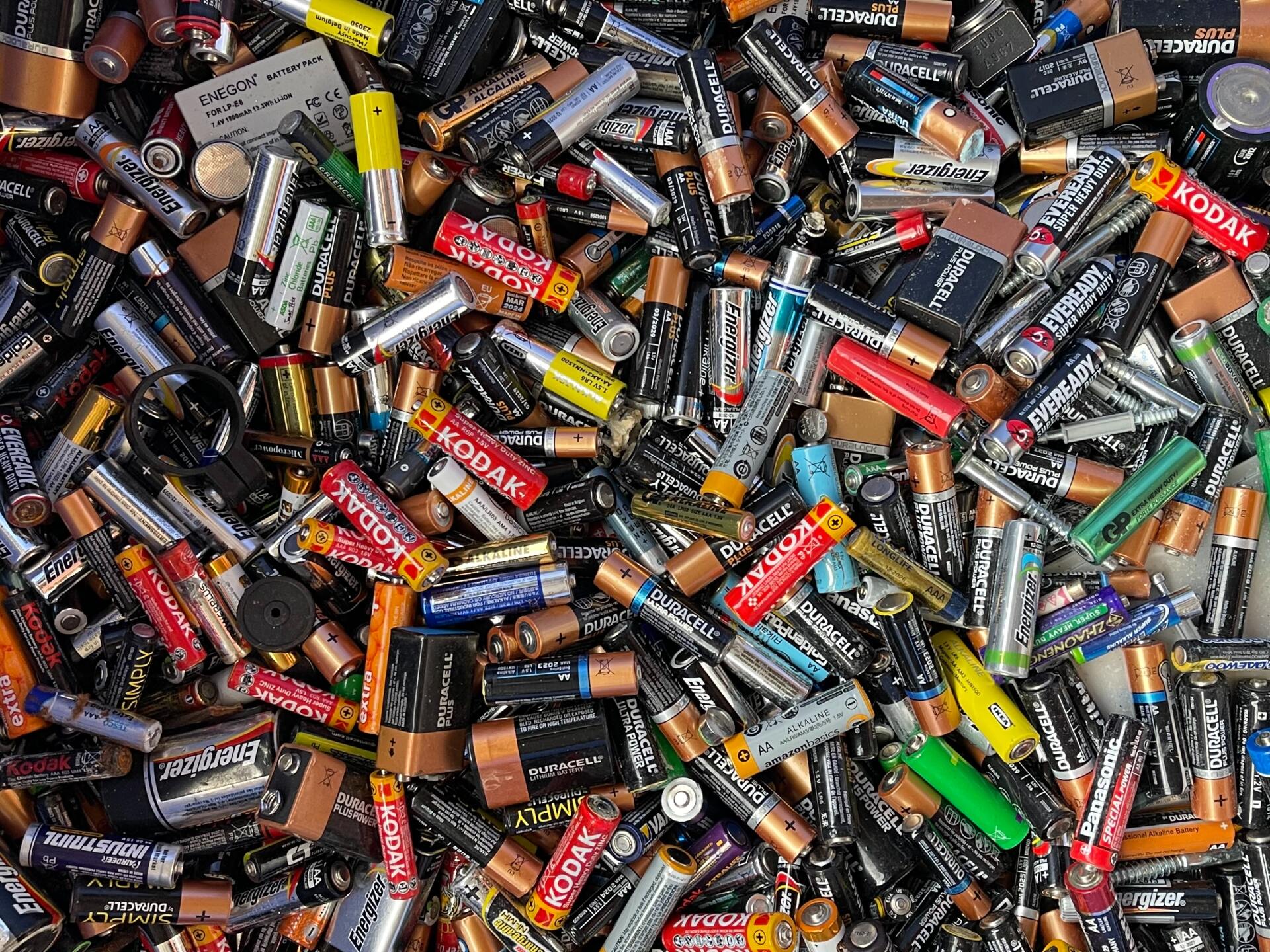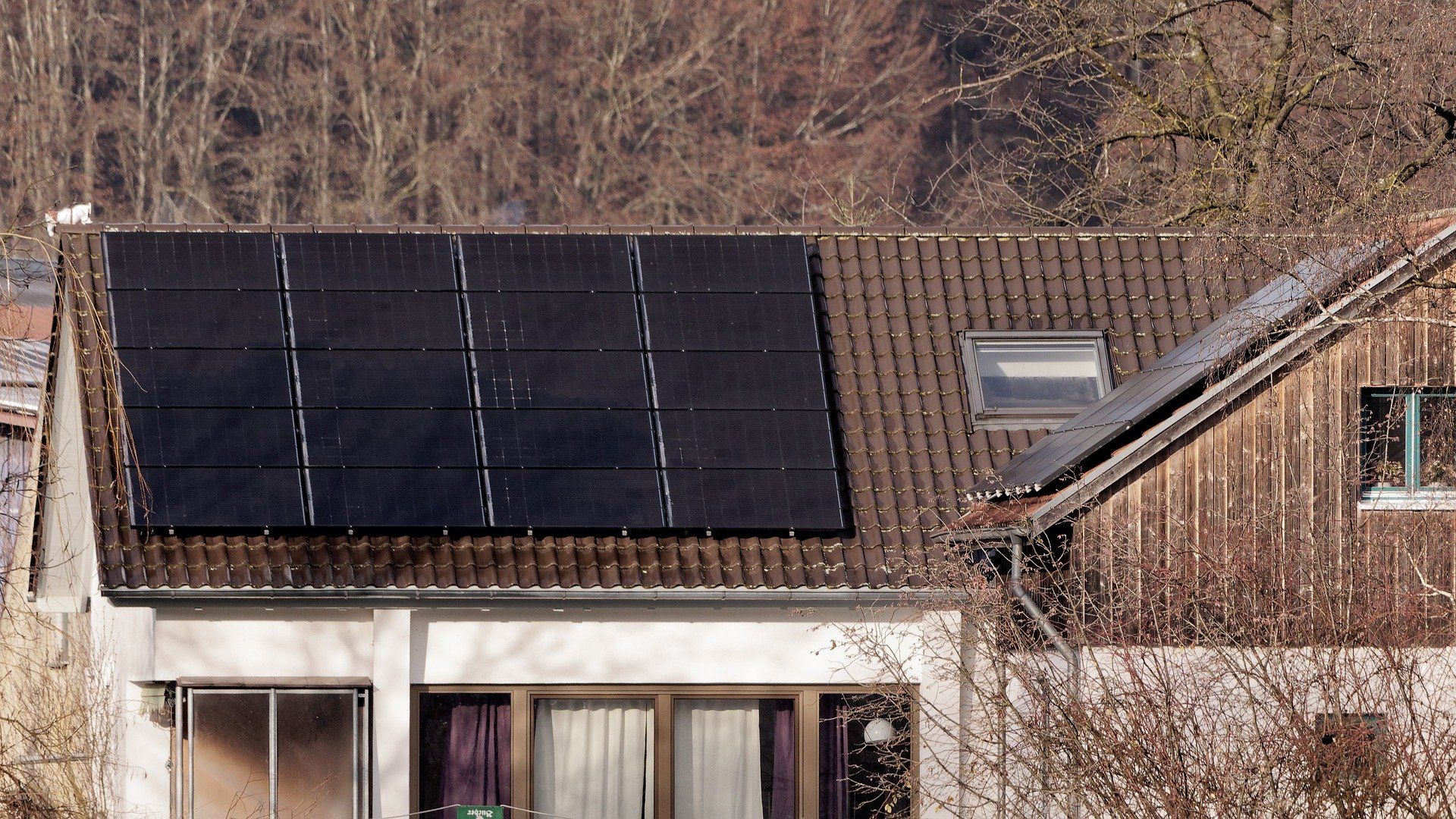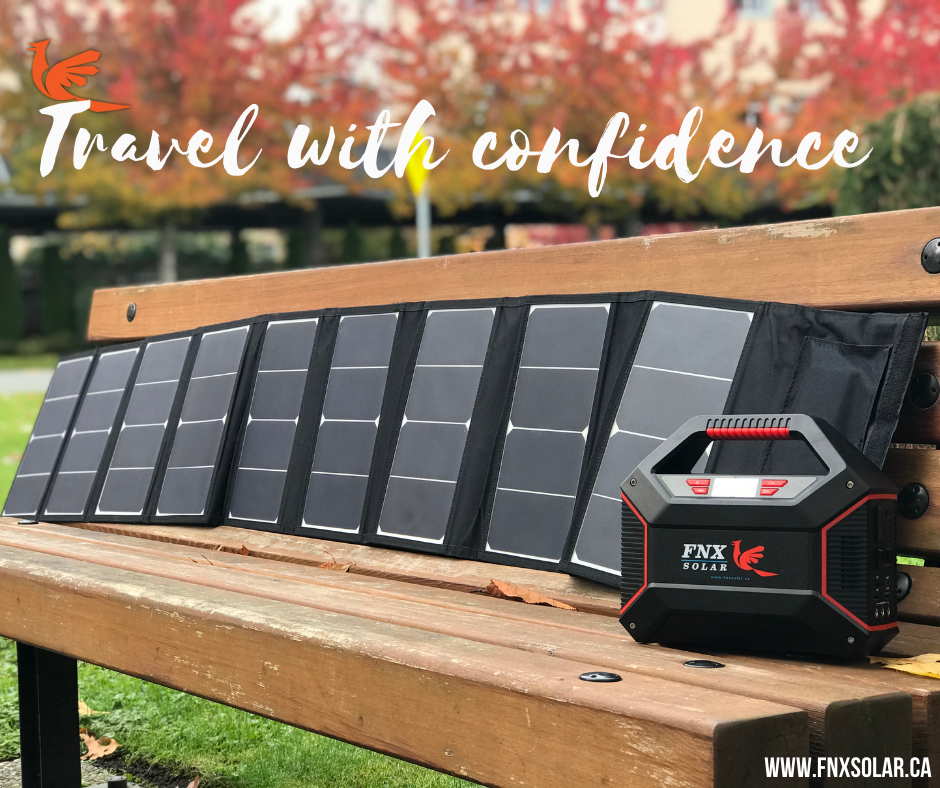Power Consumption of Common Electrical Appliances
Ruchie Custan • April 20, 2020
Curious to know how much power your appliance or gadget is consuming every time you plug it to your wall outlet and power it on? FNX Solar has compiled a list of appliances and their power consumption to give you some ideas how much electrical power is required to run them.
Knowing the power consumption of various household electrical appliances can be helpful in different ways. The most important, in my opinion, is it allows us to understand how much power a particular appliance is drawing from your energy utility provider every time you use it, which then equates to the electricity bill you will need to pay at the end of each billing cycle. People who are living off the grid and generate their own power (solar, wind, hydro, hybrid, etc.), and those who are into motorhomes and recreational adventure camping, may also benefit from knowing the power requirement of various appliances for “budgeting” the energy available from the power source (usually a battery) or just simply knowing whether their system can run a particular appliance or not based on the wattage and the size of their power inverters. This article, though only covers a small subset of appliances, tries to cover those common ones that may exist in our households, recreational vehicles, and sometimes we carry with us on our road or camping trips.
The list below is sorted from lowest to highest power consumption. Let’s get started. There are over 30 appliances listed in the table, so please make sure to scroll down the table view.
| Appliance | Watts Rating | Reference Product |
|---|---|---|
| Portable AM/FM Radio | 3 | Panasonic RF-2400 |
| USB light bulb | 4 | Camping Tent USB Light Bulb |
| CD/DVD Player | 5 | DVP-SR210P DVD Player |
| Shaver | 9 | Philips Shaver series 9000 |
| Generic USB Charger | 12 | Anker USB Charger, Anker PowerPort Mini Dual Port Phone Charger |
| Radio 2-Way | 12 | T800 Two-Way Radios** |
| Printer | 14 | HP ENVY 5055 All-in-One Printer |
| Fan | 24 | Hopkins SP570804 Go Gear 12 Volt Oscillating Fan |
| Compact Portable Power Station | 30 | FNX-Solar FLEX-GEN 100 |
| Satellite Dish & Receiver | 30 | Dish 500 HD/ PVR Camping Combo w/ 3' Tripod for Bell TV / Telus Satellite TV |
| USB Fast Charger | 30 | Anker 30W Power IQ 3.0 USB C Charger, PowerPort III mini |
| 32" HDTV | 40 | Samsung UN32J4000EFXZC |
| 200W Inverter portable power station | 45 | FNX-Solar FLEX-GEN 200 portable power station |
| Heating Pad | 55 | Sunbeam® Dry Heating Pad, Standard |
| Chest Freezer | 65 | Whynter FM-45G 45-Quart Portable Refrigerator/Freezer |
| Laptop | 65 | HP 470 G7 Notebook |
| 41" LCD TV | 100 | Samsung LCD TV |
| Car Vacuum | 120 | Armor All Car Vacuum |
| Electric Blanket | 120 | Tefici Electric Heated Blanket Throw |
| Inflator Pump | 120 | AstroAI Portable Air Compressor Pump |
| 55" Smart TV | 135 | Samsung UN55NU6900FXZC |
| Desktop Computer | 180 | HP Pavilion 590-p0139 |
| Rice Cooker | 200 | BLACK+DECKER Personal Size Rice Cooker, 3 Cup RC503C |
| Blender | 250 | Oster MyBlend Blender |
| LCD projector | 297 | Epson Pro EX7260 |
| Slow Cooker | 370 | Crock-Pot® 8Qt. Oval Manual Slow Cooker |
| Corn Popper | 600 | Nostalgia SP660SS 6-Quart Stirring Popcorn Popper |
| Personal space heater | 750 | Vornado VH203 |
| Coffee Maker | 900 | Proctor Silex 12-cup |
Below table is a continuation of previous one, with focus on appliances that consume about 1000 watts (1kW) and above.
| Appliance | Watts Rating | Example Product |
|---|---|---|
| Toaster | 900 | KitchenAid KMT2115SX 2-Slice Toaster |
| Washer | 1100 | Whirlpool WFW560CHW** |
| Electric Grill | 1200 | Hamilton-Beach 25361C Stainless Steel Indoor Flavor/Searing Grill |
| Microwave (635W Cooking Power) | 1200 | Panasonic NNST676S |
| Space Heater | 1500 | Ventamatic H1027 |
| Clothes Flat Iron | 1600 | T-fal Ultraglide Steam Iron |
| Deep Fryer | 1700 | T-fal FR800051 Deep Fryer |
| Dryer | 4700 | Whirlpool YWHD560CHW** |
The brand names and product models were indicated in the list as a way to establish a baseline where the power ratings were based from. The power consumption may vary greatly for a different make and model of the same appliance, so please be cognizant about this. FNX-Solar Power Solutions Inc. is not associated with those brands except for the Portable Power Stations and USB bulb that we carry in our store.
Please note that while the author tried his best to make the wattage information correct, there are just certain appliances that do not indicate their wattage rating in their user manual or in manufacturer’s websites. In those cases, I have to estimate the power consumption by either basing the power consumption to a similar product, or by doing some calculations. In the list, only about 5% do not indicate the power consumption in the user manual, the rest do.
Stay tuned for our upcoming articles that will cover some methods to estimate battery operation time based on the wattage rating of the appliance, battery capacity, and system efficiency.
About the author:
Ruchie is a co-founder of FNX Solar Power Solutions Inc. He holds a degree in Electronics Engineering and has been working in the product design and development field for 14+ years. FNX Solar Power Solutions Inc. is a business based in Canada. We develop and sell portable power stations
and related accessories.

Batteries, all shapes and sizes, have their respective specification. Though we can simply distinguish or define them via their names or composition, it is also important to know what they are truly capable of and how they are meant to be used. In this article, we are going to tackle one spec of a battery that is always been taken for granted, this may not be not that be not that life-changing for a conventional battery user but it is nevertheless important for developers and designers. The C-rating of a particular battery indicates how fast it can charge and discharge with respect to time. For example you have a 1000mAh battery, we cannot totally assume that it can deliver a 1000mA for an hour if it doesn’t have a C-rating of 1C - The same 1000mAh battery might only be able to deliver 500mA for a period of 2 hours if it is rated 0.5C. Knowledge of C-rating is important because the available stored energy after a period of time of a battery is dependent on its charge/discharge rate. C-RATING TIME CHART Below is a list of C-rates with their corresponding charge/discharge time for conventional batteries.

With all the advancements in the Solar PV battery system technologies in the recent years,We now have a vast number of options that can suit different user applications. On the past battery-related articles that we’ve published, we were mainly focused on the utilization of ltihium-ion and lithium-iron-phosphate, lead acid, etc. for general solar PV system applications, for this article we will discuss another battery type that has been around for some time, The Sodium nickel chloride battery.

Brand-new types of battery are taking on the technology spectrum like a wildfire. The emergence of trends in electric vehicles, smartphones, portable power stations, and renewable energy developments prompt a global initiative to create and develop more efficient and safe batteries. These advances create a very healthy competition inside the world of batteries and is certainly advantageous for all the stake-holders, the cost-effectiveness of the batteries will steadily climb in the years to come and will continue to do so. From the perspective of innovators, this opens up a new question, among the rumbling in the battery world, what do you think is the best battery to use for my application? FNX Solar has been really keen on keeping an eye on the market in search for the next best battery to be used in our products. With this, we decided to discuss two of the most used batteries in portable systems, Lithium-ion and Lithium iron phosphate. Lithium-ion(Li-ion) and Lithium iron phosphate(LiFePo) are two of the most used batteries in portable systems. Their energy density and other specifications are most ideal for these types of applications. Though they are both good in their own way, there are differences between them that should be considered before deciding on which one to use. Lithium-ion batteries Lithium-ion batteries can have either Lithium manganese oxide or lithium cobalt oxide for its cathode. Both use graphite for its anode. With a specific energy density of ~100-250 WH per kilogram, it has a nominal voltage of 3.6v. Charge rate can vary from 0.7C to 1.0C. And the discharge rate is 1C for either of the two classes. It is one of the most commonly used battery types for portable electronic systems like smartphones, etc. These batteries are at their best performance for 2-3 years or ~500-1000 charge cycles.

The trend on renewable energy dependency arises world-wide, the curiosity about the latter also increases. Some people just want to gain some ideas regarding the system for some other reason, and some, are thoroughly researching for their plans to have one for their own. The technology is relatively new, but most if not all of us has already heard about it; from afar, it is a very inviting idea, being able to save money from your monthly dues, being able to do your part in saving earth, etc. But you might really need to look deeper into the subject to really understand correctly the right investments to make. Choosing the exact parts for your system might be too huge for a single article like this, Since we already have an article for comparison of the most common solar PV panels , and some discussions about common battery charging voltage , I decided to discuss the next big component down the line, The solar charge controller. The Solar charge controller has two main functions: 1. Prevent overcharging of your batteries. 2. Prevent backflow of electricity from your batteries. Overcharging has been a really major concern since the era of batteries started, it’s not new that this issue must be addressed in all systems that involves the use of batteries. This might cause damage to batteries, or even a bigger problem. For a solar PV system, the solar charge controllers ensure that the battery will not experience this. The device will monitor the voltage of the batteries and cut the supply from the PV panels once a certain voltage level is reached. During the night, the voltage level of the batteries is higher than that of the PV panels, as we all know, electricity travels from higher potential to lower. This might cause damage to the batteries and if the backflow is severe, might completely ruin your PV panels. The charge controller will also prevent that from happening. Now that we have already discussed the purpose of the solar charge controller, let us discuss the different types of charge controller. 1.PWM solar charge controller 2.MPPT solar charge controllers

Batteries - one of the most common electrical equipment that we use on a daily basis, from mobile phones, to laptops, to whatever electronic device that we have uses this little prehistoric electrical device to keep going. What are they by the way? According to my old blog(Which I forgot I made), It converts chemical energy into electricity. Going deeper, a battery has 3 necessary parts,a cathode, an anode, and a battery solution The anode, being the negative side of the battery, sends electrons to the cathode when they are in-contact in process known as oxidation, the electrons received by the cathode are then absorbed by the ions on the battery solution in the process known as reduction. This method stores energy inside the battery that can be easily accessed by your electrical circuit. With that being said, lets move further into the details of this short blog. There are many types of batteries, with each one intended for various purposes. And this creates a little bit of complexity on handling, right usage, and, well, choosing the right battery and its condiments for your application. We wont be discussing all the battery shenanigans in this blog though, we’ll just focus on one particular issue that is very popular now as solar charging makes its way into the electric vehicle spectrum. I myself had a hard time trying to decide which particular common battery question I’ll answer, but since we are offering Tourix-Gen3 as part of our product portfolio(https://www.fnxsolar.ca/tourix-gen-3)

You might have heard of this word way before you’ve read this first line. Guys(or gals) that dwells with electronics and those who do not has most probably encountered one of these ingenious machine since birth, without knowing that it’s what keeps our car air-conditioning running. But first, lets have a quick look at some history. One of the largest battle of the industrial revolution is the battle of AC&DC. Both forces fought hand-to-hand to claim the spot of what is the best(safest) type of electricity. Thomas Edison, the owner of American Electric was over his heels keen on making his DC electricity better than AC, he even engaged on throwing mud at Nikola Tesla’s AC by telling the world that it’s unsafe and very dangerous, citing its usage in Electric chairs. Well we already know what happened next, AC prevails and we still use today in a daily basis. So As DC, small electronics among other things receives DC as the optimal electricity for their application. Having two different types of electricity that requires slightly different type of machines to produce is quite a pain in the brain. We need a device that can connect AC to DC and vice versa. Thus, devices that does this were invented to address this. There are two most common types of bridge between the two electric types. 1.) For AC to DC we use Rectifiers, 2.) For DC to AC we use inverters. Now these are two different devices, Rectifiers are easier compared to Inverters by build, So we’ll discuss it first. Rectifiers makes AC turn into DC, it does this by using diodes configured in such way that when the alternating current reverses its direction electrons still flows the same way.

Welcome to 2021! Better late than never! 2020 has been both a challenge and a blessing for us, setting up an organization during these hard times is surely not that easy, but we were able to make it through thanks to your support! FNX Solar has reached hundreds of household just on 2020 alone, and we continue to deliver reliable portable powestations to Canada and Asia as of the moment, with no recorded returns or warranty usage, we can proudly boast our top-of-the-line quality products. As we continue to expand our company, we are excited to announce our new products and ventures.

Solar energy is one of the hottest topics right now. many if not most of energy related companies are getting more interested in solar energy, This is a very good sign for both technology advancement and environmental conservation. (discussion about the history and principle of solar harnessing technology can be found here: https://www.fnxsolar.ca/solar-panel-principle-of-operation-monocrystaline-vs-polycrystaline.)For the record, we are very ecstatic about this progress, some might not appreciate it that much, but this is a very exciting topic. We see this positive development from governments being more assertive in the introduction renewable energy to their countries to the more aggressive production of electric vehicles; Certainly, this is a very good news for nature! but how can we co-relate this to our company's initiative? here's how: FNX-Solar was founded under the idea of giving adventurers the power they need when they're on the go, and a part of it is harnessing free energy from the sun. thus, the company is also interested in developing more efficient methods in harnessing free solar energy. if we get more companies to dwell in this early-stage industry,we can trigger a more competitive atmosphere within that bubble, and as a result, we also get to have better chances of getting cheaper parts for our own interest. This is a win-win situation for both our customers, our company and ultimately, mother nature. however, we can not realize these progress until all the development for the new systems are completed. so as for the mean time, we have no choice but to efficiently use the current available systems; But don’t be sad, technology has been upgrading alot recently, so as a company with the initiative to deliver the most cost-effective system to our customers, we always endeavour to keep with the brand new trends. Our SOLARIX series solar panels have been in the market for months, with the primary objective of making it one of the most(if not the most) sought-after foldable portable solar panel in the market, we started developing it with sustainability and efficiency in mind. it might look like just another solar panel but believe me, there is more than how it looks. here are some.feature of our highest W panel, the SOLARIX-60:

As an electrical engineer by profession, I often get the “How much would it cost me to go solar?” question, I can’t blame them for sure, the promise of going off-grid is quite mesmerizing, but alongside this exciting feat lurks some things we should know before buying your first PV system - but before we get into that, let’s get familiar with terms first: A generator is a machine that converts mechanical energy into electrical energy via electro-magnetic induction,
This pandemic has brought several challenges along with the virus itself. Aside from the health of the general populace (most important), the economic effect in all known industry is also evident. For the past few days, news circulating in media outlets have recorded several business downfalls and economic recessions that we wouldn’t have thought a year ago. According to Reuters, Australia has recorded worst economic drop in 30 years as the pandemic shut down businesses while cases continue to threaten normalization. Other countries are also experiencing hard times as we continuously muscle our way out of this quicksand. In our part, thou our workforce has been slashed down significantly, we are still managing to complete products in an “OK” rate, We admit that our production capabilities has been slowed down, and some of the customers have even agreed to purchase our unofficial roll-outs(same with the actual product but was supposedly for performance testing and marketing only) for our newer products, and it is quite surprising for us - Based from the feedback and the overwhelming number of inquiries that we have received, we have stepped up our production efforts - As of this moment, our production team is working non-stop as we take extra steps to guarantee continuous delivery for our customers and future customers. The newest addition to the FLEX-GEN family, the FLEX-GEN 500, has received a huge number of inquiries for the past month, we had to spend more time in the production for these particular unit just to fulfill our market projection. Luckily, after an intense month of building our supplies,several batches of FG500 and its older brother FG200 is now on its way to Canada and the Philippines.




